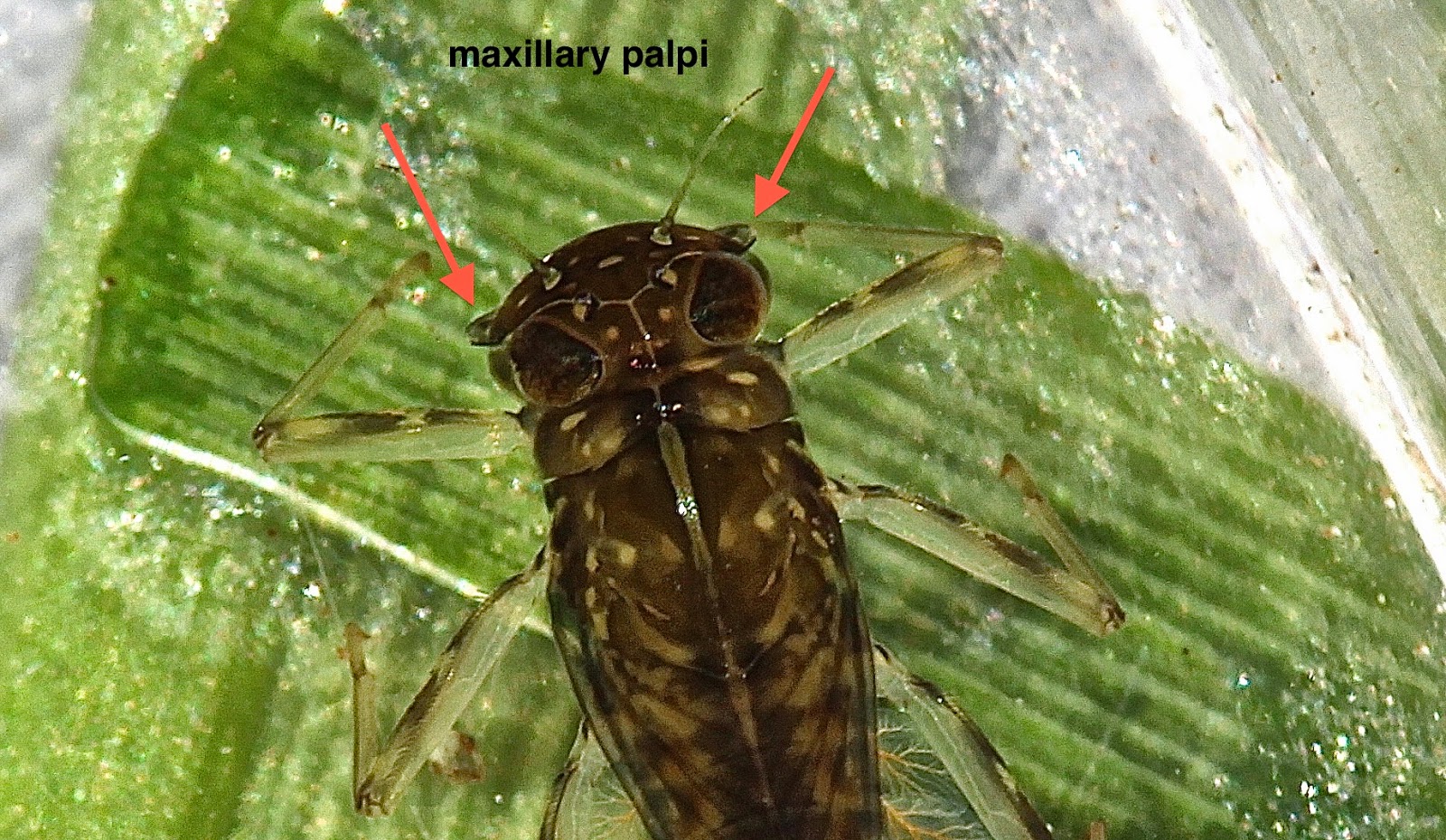The flatheaded mayfly, Cinygmula subaequalis. I found two of them today in two different streams in Sugar Hollow and got pretty nice photos of both. This is the other.
This is not an insect we commonly see: this is only the 3rd or 4th time that I've found it. Beaty notes that it's only found "in high quality mountain streams": the tolerance value is 0.0. C. subaequalis is the only species that's found in NC -- probably in VA as well, though I don't know that for sure. Here's Beaty's description of the genus. "Front of head incised medially; maxillary palpi protude at side of head; all gills on segments 1-7 similar in size and shape; fibrilliform portion of gills 2-6 absent or vestigial; three caudal filaments." ("The Ephemeroptera of North Carolina," p. 17)
The maxillary palpi are actually visible when you look down at the live nymph: they sort of stick out like horns.
For the medial incision on the head, we need a microscope view.
We can see the similar size and shape to the gills in both of the photos at the top of the page. Here are some other good photos since we see this nymph only rarely.
This is a small insect: this one was fairly mature and measured 6 mm. But it's easy to pick out by the very wide head. (Beaty, "Ephemeroptera," p. 19 -- "Head wider than pronotum.") You may recall that it's distinguished from genus Heptagenia by the lack of fibrilliform at the rear of gill 7. (In this photo it's tough to see the fibrilliform behind gill 6 as well.)
________________
Other photos.
1. As I would expect, the most common insect I saw today -- in the leaf packs and the vegetation growing on rocks -- was the spiny crawler, Ephemerella dorothea.
2. I also saw quite a few Baetis tricaudatus small minnow mayflies -- and that was unexpected. Many -- but not all -- were fully mature with black wing pads. This one's still immature.
3. I did find a few Isoperla Perlodids. But they're still very small. The first, Isoperla holochlora,
the second, one of our unknown Isoperlas in terms of the species. Since it's fairly common out here, I might start to call it -- until we know what it is -- Isoperla sugarhollowis!
________________
A nice day. But even these headwater streams are still running high. Don't know when I might get back to Buck Mountain Creek, the Lynch River, the Rapidan or the Doyles -- and it's such a good time of year to find neat insects in all of those streams.


















No comments:
Post a Comment